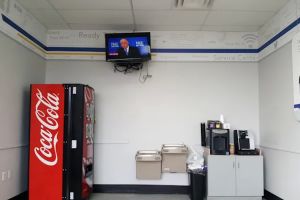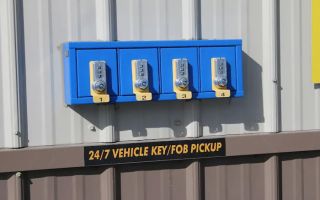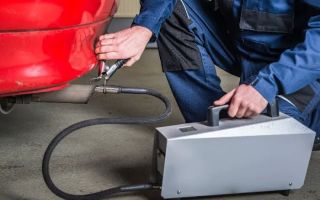What to Do If My Car Battery Won't Hold a Charge
- Understanding the Problem: Why Your Battery Might Not Hold a Charge
- Step 1: Check the Battery Condition
- Step 2: Check the Alternator
- Step 3: Check the Battery Cables and Terminals
- Step 4: Check for Parasitic Drains
- Step 5: Replace the Battery
- When to Call a Professional for Help
Understanding the Problem: Why Your Battery Might Not Hold a Charge
Car batteries are essential for powering everything from your vehicle’s engine to its electrical systems. When a battery won't hold a charge, it can be frustrating and inconvenient. The issue could be related to a few different factors, such as an old or damaged battery, a faulty alternator, or a parasitic drain that depletes your battery's power when the car is turned off. Understanding the reasons behind this problem can help you narrow down the potential causes and decide on the right course of action.
In this article, we’ll explore common reasons why a car battery may not hold a charge and what you can do to address the issue. Whether you're dealing with an older battery or suspect a deeper electrical problem, following these steps will guide you through troubleshooting and help you decide if it's time to replace your battery or call a professional for assistance.
Step 1: Check the Battery Condition
The first step in diagnosing a battery that won’t hold a charge is to check the condition of the battery itself. Over time, batteries can wear down and lose their ability to hold a charge. This is especially common if the battery is more than three to five years old. If your battery is still relatively new, it might be worth considering other potential causes.

NTB-National Tire & Battery
6315 Prentiss School Dr, Canal Winchester, OH 43110, USA
Signs of a Bad Battery
Some signs that your battery may be the culprit include:
- Difficulty starting the car or slow engine turnover.
- Visible corrosion around the battery terminals.
- A “Check Engine” or “Battery” warning light on the dashboard.
If you notice any of these signs, it's a good idea to have your battery tested at an auto parts store or mechanic. Most places will offer free battery testing to determine whether your battery is still functional.
Step 2: Check the Alternator
If your battery is in good condition but still doesn’t hold a charge, the next step is to check your alternator. The alternator is responsible for charging your battery while the engine is running, so if it fails, your battery won’t charge properly. A malfunctioning alternator can cause your battery to drain quickly, even if it’s relatively new.

Pep Boys
1200 W Washington Blvd, Los Angeles, CA 90007, USA
How to Check Your Alternator
You can perform a simple test of your alternator by starting the car and using a voltmeter to measure the voltage at the battery terminals. The voltage should typically be between 13.7 and 14.7 volts when the engine is running. If the reading is lower, it may indicate that the alternator is not charging the battery effectively and needs to be replaced.
Step 3: Check the Battery Cables and Terminals
Even if your battery and alternator seem to be in good shape, the issue could be related to poor connections. Corroded or loose battery cables can prevent the battery from charging properly. It’s important to inspect the cables and terminals for any visible corrosion, dirt, or damage that might be interfering with the electrical connection.
Cleaning the Battery Terminals
If you find corrosion around the battery terminals, you can clean it off using a mixture of baking soda and water. Be sure to disconnect the battery before cleaning, and be gentle to avoid damaging the terminals. After cleaning, make sure the connections are tight and secure to ensure a proper connection between the battery and the car’s electrical system.
Step 4: Check for Parasitic Drains
A parasitic drain occurs when an electrical component in the vehicle continues to draw power from the battery even after the car is turned off. This could be caused by faulty wiring, malfunctioning electrical parts, or even leaving lights on inside the car. Over time, parasitic drains can slowly drain the battery, leading to a situation where it won’t hold a charge.
How to Diagnose a Parasitic Drain
To diagnose a parasitic drain, you can use a multimeter to measure the current draw from the battery when the car is turned off. If the draw exceeds the normal range (usually less than 50 milliamps), it could indicate a parasitic drain. If you’re not familiar with using a multimeter, it’s best to have a professional mechanic conduct the test to pinpoint the exact source of the drain.
Step 5: Replace the Battery
If the battery has failed the tests and can no longer hold a charge, it’s time to replace it. A new battery should restore proper electrical performance and ensure your car starts reliably. When choosing a replacement, make sure to select a battery that is compatible with your vehicle's make and model. You can consult the car manual or ask a professional mechanic for guidance.
Installing the New Battery
If you're comfortable with basic car maintenance, you can replace the battery yourself. Start by disconnecting the negative terminal first, followed by the positive terminal. After removing the old battery, install the new one and connect the terminals in reverse order. If you're unsure about replacing the battery, it’s always a good idea to have a professional handle the installation.
When to Call a Professional for Help
If you’ve gone through these steps and your battery still won’t hold a charge, or if you’re not confident in diagnosing the issue yourself, it’s time to call a professional. Auto repair shops and mobile mechanics have the tools and expertise to diagnose and resolve more complex issues, including faulty alternators or electrical system problems that may be affecting your battery’s performance.
Calling a professional service like Rescue & Towing can also be a good option if you're stranded or need immediate assistance with your car. They offer towing services and on-site help, ensuring that your vehicle is taken care of quickly and efficiently.


























